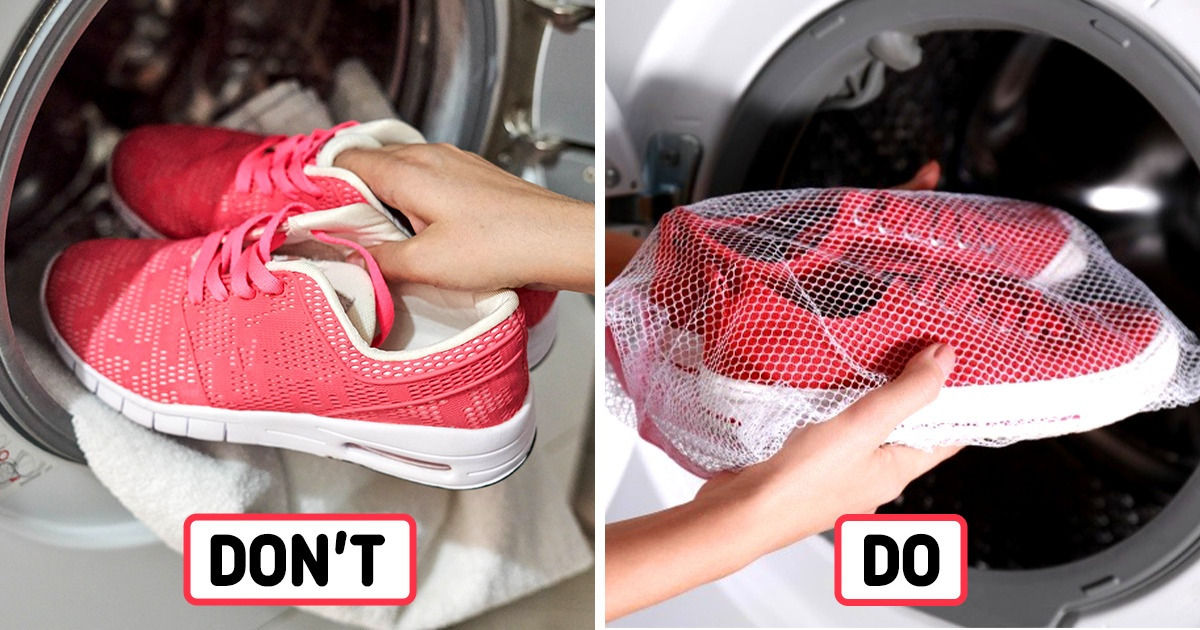15+ Stories That Prove Being a Flight Attendant Is Not the Easiest Job


Knowing how to wash everyday objects properly from the very beginning will let you enjoy them for much longer. Sometimes, the best option is to machine wash. But there are still many precautions we should take, and using the right ’’ingredients’’ in our “recipe” can make for a more pleasant washing experience. In other cases, washing by hand is required to prevent things from getting damaged and their colors from fading too soon.
We at Bright Side have found out which methods to choose in each situation and what steps to take to prepare your things for washing and then drying them with the greatest results.
Wash your towels separately using the hottest possible water setting in your washing machine. Add in one cup of vinegar and don’t use any detergent or fabric softener for now. After everything is well mixed, stop the machine and soak the towels for about an hour. Then turn the machine back on and let the washing cycle complete.
Add another cup of vinegar and your usual fabric softener at this time. Another option is to replace the vinegar with some lemon juice, which also can give you very soft, clean towels. Restart the machine. And after everything is finished, put the towels into the dryer immediately.
First of all, it’s worth mentioning that there’s no need to wash your jeans too often. In fact, doing that can cause them to fade pretty quickly. So once every 4 to 6 weeks is completely okay unless there are really bad stains on them.
Before washing, turn the jeans inside out, so they can maintain more of their color. Use a color protectant detergent or vinegar and use the lowest possible spin cycle and temperature. If there’s an option for a gentle wash or hand wash on your machine, don’t hesitate to use these.
First of all, check the tag, since shopping bags are made of different materials. The good news is that most cotton and canvas shopping bags can be washed in a machine. Use the hottest water possible and a regular detergent.
Wash plastic bags by hand in warm water. Turn the bag inside out to get into the corners, add 2 tbsp of dish soap, and soak for 15 minutes. Dry them completely before storing them away. If you aren’t by a sink, try using disinfecting wipes and also allow your bag to dry.
At first, of course, remove the dirt and surface debris with a damp rag and clean the soles with a toothbrush before washing them in warm, soapy water. Remove the insoles and laces and put everything in the washing machine separately.
Put the shoes in a mesh bag and seal it for protection. Set it to the gentle cycle with rather cold or warm water. Hot water will cause the glue bonds to weaken, crack, or melt. Don’t use fabric softener either since it can leave a residue that will only attract more dirt later.
At the end of the washing process, place the shoes in the open air and let them dry for at least 24 hours before wearing them. Do not use a dryer — it will only damage your shoes.
Take off your shower curtain and put it into the washing machine. Set it for a small to medium-sized load with warm water — it’s a good option for most liners. Just don’t use cold or hot water for plastic ones, as they will become brittle and damaged.
You can use vinegar here as well. But don’t use any fabric softener since it will only give your curtain a strange chemical smell. Choose a gentle cycle and once it’s washed, hang it back up to dry. Be careful and don’t use any dryers — they can melt the liner and ruin it as well as the dryer itself.
Again, read the label to find out if the pillow you’re dealing with is machine-washable. It’s better not to wash synthetic or very old pillows this way because they may fall apart right in the washing machine. Also don’t put feather-filled, latex, buckwheat, or memory foam pillows in the washing machine.
Set the machine to a gentle cycle and choose a temperature according to the label on the pillow. Use normal detergent and turn the machine on. Add an extra rinse cycle if necessary. This will completely remove any traces of the detergent and will help the pillow to dry faster.
Wash your pillows twice a year. Washing them more frequently, unfortunately, isn’t very hygienic.
Make sure the label says if your toy’s fabric is, in fact, washable. If there are some sequins on the toy, it won’t survive a wash in the machine. If it’s filled with small foam balls, opt for handwashing.
First, remove any clothing or parts that can be separated and put them all in a mesh bag. Pre-soak it all with a diluted vinegar solution before putting it in the washing machine. Place the toy inside the washer and add a very small amount of mild detergent. Fabric softener is normally unnecessary — vinegar should help the toy remain soft and fluffy.
Set the machine to cold water and the gentlest possible cycle. Never use hot water for these purposes, as it’s too harmful to the toy. Lastly, let the toy air-dry. Primp the dry toy and return it to your child.
Fill a sink with warm water and mix mild, alcohol-free detergent in it. Use baby shampoo if you’re not sure. Add the bras in, but make sure you wash only similar colors together. Let them soak there for 10-15 minutes, if the bras are really dirty, leave them there for one hour.
Swish and squish the bras and rinse them with clean water. Keep doing that until the water is clear and there is no soap left, then you can let them air-dry.
Another option is to lay them down on a towel and cover them with one another. Press the bras lightly to remove any extra moisture. Don’t squeeze or wring them. Reshape the cups and let the bras dry in the open air.
What other tips do you have from your own experience? What other useful solutions can you offer to accompany the aforementioned recommendations?











